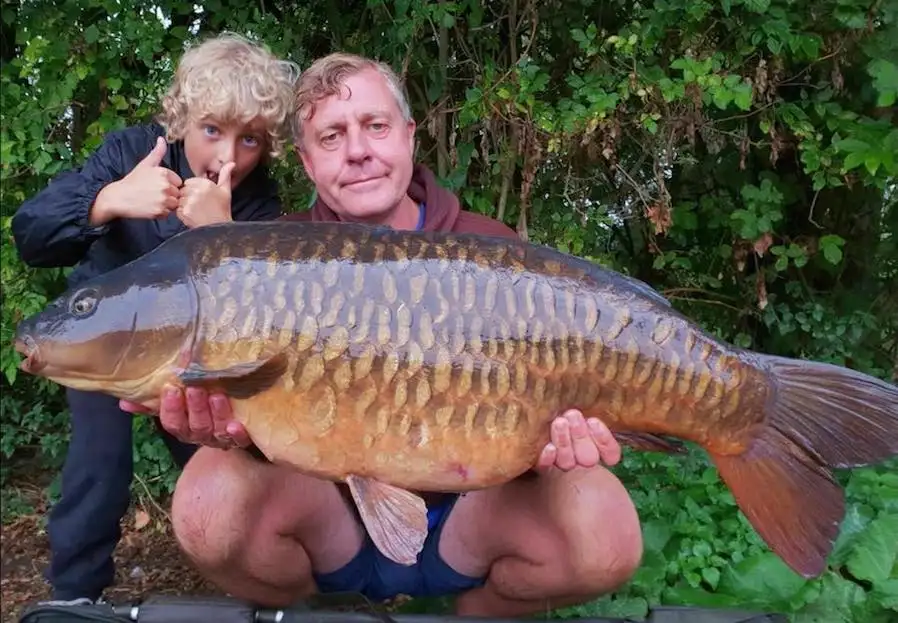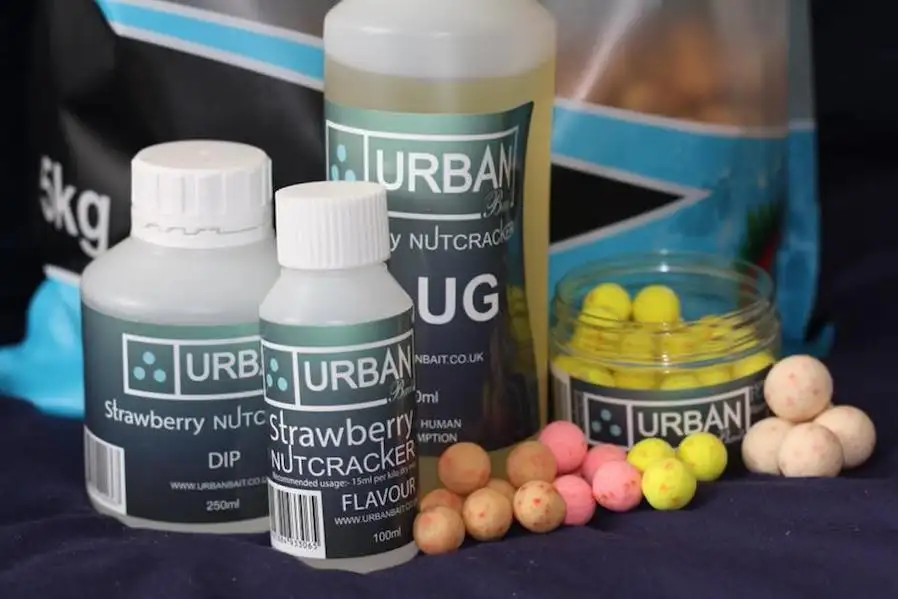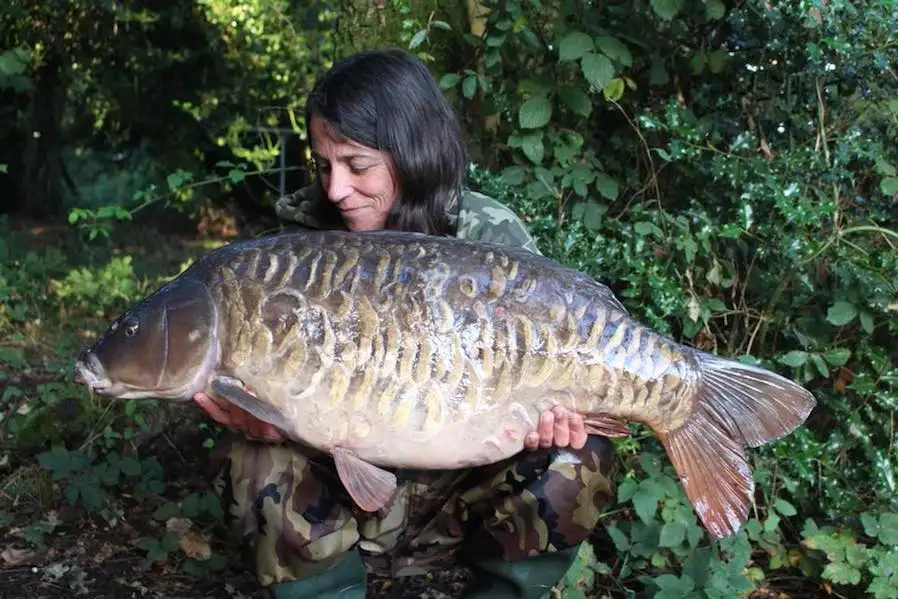This is a demo store. No orders will be fulfilled.
Dragons Den - Terry Dempsey & Urban Baits

Now, I'm not going to comment on how Urban Bait fared in the Den – that would be a spoiler for those of you who haven't watched the episode yet – but we are going to look a little more at the issues that face angling retail, and the small, independent manufacturers of bait and tackle that often provide a lot of the quality products anglers expect to find on the shelves, or the online pages, of larger fishing stores.

From a manufacturer's perspective, one of the major hurdles faced when things start to take off, and you find you need a cash injection to keep up with demand, and continue riding the wave of peak demand until it levels out into high-but-consistent territory, is that creating effective angling products, especially bait and tackle, relies on spending a lot of time actually fishing – something that boardroom suits tend to raise eyebrows at, seeing it as “shirking management responsibilities” and “not looking after your business.” It can be difficult to get across to people for whom angling is, at best, a casual hobby – a nice way to spend a couple of hours on a warm day when there's nothing else to do – and, at worst, anathema, with the all-too-common reaction to catch and release of “Why would you do that? It leaves me cold, quite frankly – it just seems so cruel”, the simple fact that, when you're creating products geared around sports performance, a key part of ensuring business success is actually doing the sport, using the products you're designing in the way they will be used by the people who, hopefully, will come to buy them. Fishing manufacturers don't find their customers through expensive ad campaigns. They're unlikely to get fawning write ups in the broadsheet press, or be invited to do an interview on Good Morning, Britain – angling isn't trendy, it isn't seen as a hip, young, eco-conscious way to spend your time, and, often, the best anglers aren't particularly eloquent; our sport is very much action-focused; you succeed by what you do, and it's your results, not your words, that impress people. That being the case, those involved in the manufacturing side of the angling business have to go and find their customers, in situations where their products can be immediately put to use. This is especially true for bait blenders; no angler is going to sit through a 20minute spiel on the quality of your ingredients, and how lovely and healthy and natural the bait is; they're going to want to run it up on a rig, chuck it in the water, and see what it catches – because, with bait, that's how you know it works. You can create the most intricate shapes, with the best quality ingredients, but if an angler who's been pulling out low doubles consistently for the past year blanks on your bait, you've lost at least one sale – probably more, as nothing travels faster than gossip in the angling world. While tackle manufacturers at least have the advantage of their products being something people can pick up, feel the weight of, and thoroughly assess once they're on the shelves of a bricks-and-mortar store, bait, packaged up and stocked out, tends to look much of a muchness. It's also notoriously difficult to get anglers to switch from personal favourites to something new; we're a superstitious bunch, as a rule, and we'll be absolutely convinced that the bait we caught our personal best on is the only bait that will ever be able to bring in big fish. It doesn't matter that we “know”, on an intellectual level, that there are other baits out there performing just as well as our favourite; instinctively, we feel that everything will fall apart if we try something new. However, if we see a new bait performing well – maybe we're there when someone catches on it, or a new record is landed with it, and it gets a mention in the resulting profiles across the angling press – we'll give it a try, because we want those kind of results, that kind of publicity, for ourselves. That's the other thing that makes it difficult for non-anglers to understand angling, and non-angling investors to feel comfortable financing angling businesses; anglers are a contradiction, secretive souls, with a longing for public recognition, especially on the carp circuit. We want you to know that we've got a beautiful slab of scaley perfection, but there's no way we're telling you where we caught it! The reserve is understandable – big fish happen because they're not stressed, and they're given the space and freedom to enjoy themselves, with plenty of natural food, and all the benefits of good husbandry. If every big fish capture was immediately tweeted about, and blasted on social media, venues would be rammed with anglers who only had half a clue how to fish responsibly, and the chances of future big fish landings would drop like a stone. Angling is a sport that's as much about the lifestyle as it is the performance, and no one who takes their sport seriously wants to be shoved up, shoulder to shoulder, with a crowd of people who've only turned up to a venue because they've heard it's got a big'un in. Choosing a fishing venue will obviously involve the size of fish that are known to be in the water – carp angling is all about size, after all – but there are many other factors at play, too, including how challenging the fish are to catch (the more challenging, the better, with fish that aren't pressured by hoards of have-a-go anglers every weekend tending to offer far better sport than those who become used to the bait, tackle, and tactics of the crowd), and the opportunity to do something no one else has done.
Anglers, to put it bluntly, can be a nightmare to sell to, unless you have an established name behind you that you know newcomers will buy in order to fit in, and can rely on certain people buying without blinking simply because of who you are, and what your name and logo says about them. Trakker, Wychwood, Aqua, Century – these are go-to names that can charge more or less whatever they like, because there are enough anglers who will buy it because it comes from that brand, and those anglers have decided that's the brand they want in their Instagram photos, that's the brand that will ensure their session brings the results they want, that's the brand whose clothing, tackle, and bankside essentials can stand up to the demands of several days spent out by the lake in rough weather. That's the brand whose stoves won't go out when you most need a brew.

Business people who aren't anglers themselves are an uneasy alliance for angling brands, because the two parties are coming from polar opposites in terms of their understanding of how to sell to the target customer base, and what constitutes “success.” To a non-angling business person, success is a bottom line that's always increasing. It's instant brand recognition, it's people switching to your brand from other brands, it's shelf space prominence and widescale media attention. For an angler with an angling product to sell, success is obviously going to involve making money, but it's usually “making enough money to pay someone else to deal with the day to day stuff”. Success is also less about instant recognition, and more about not having negative opinions circulating. It's less about blanket coverage, and more about getting mentions in the right places, at the right time. Carp angling bait, tackle, and accessories are actually a very sound investment proposition, as people will go carping all year round, with the leading brands ensuring bankside comfort and convenience even in the depths of winter, with fleece-lined, waterproof clothing, bivvy wraps, bivvy heaters, and five-season sleeping bags – just in case the fourth and final season of the year decides to get above itself, and exceed everybody's expectations for just how bitter, inconvenient, and damaging it can be. Someone who'd created a targeted pike bait, for example, wouldn't be such a good proposition; what are people supposed to buy from you between April and September, when the piking season isn't really happening? Specimen coarse fishing is a difficult proposition for a different reason; specimen anglers are looking for bait and tackle that's geared, in most cases, to one or two specific species, that these coarse anglers will target every time. Match angling probably comes close to carp in terms of investment viability, with both disciplines having a lot of active anglers who are willing and able to spend plenty of money for the right tackle, the right bait, and the right look. Fly fishing, while attracting the top tier price wise, has fewer regular anglers than other disciplines, with those who are involved in the sport having very clear requirements, and extremely high standards, for every aspect of their tackle, clothing, and accessories set up. Investors who aren't anglers themselves don't see the distinctions between the disciplines; to them, it's all “fishing”, and, if they don't get one aspect, they won't get any of it – and they certainly won't be parting with their money.
When it comes to Urban Bait, this is a brand that was born carpy, with Terry Dempsey honing the skills that have landed him a 54lb carp in British waters, and a 68lb personal best in Croatia on the inner-city carp scene of London; a secretive subculture that existed and rose to prominence without the assistance of big-name brand support, where anglers very often found themselves having to create the tackle and bait they needed to land the fish that would become founding stones of memories of a childhood, adolescence, and early adulthood well spent. When you understand angling, this tells you you're dealing with a business run by someone who knows how to perform, and how to connect with customers out on the bank. As a non-angler with money you're looking to put to work, however, it's all just so much blah, blah, blah. Angling doesn't have any intrinsic appeal for you as it is; the idea of someone fishing grubby city centre gravel pits does not line up with your idea of what a successful business owner looks like, or what they should be doing with their time.

Simple, striking, and stylish, Urban Bait is a brand born in the streets, with the street-smarts that know that success comes from making a quality first gesture. Packed with top grade nutrition, and presented in shapes that offer an easy mouthful for cruising carp, Urban Bait is designed to encourage wary carp to relax, unwind, and enjoy the offerings – making it more likely that one of the big beasts will pick up your hookbait, and give you a lively reaction as you bring it to the bank.
2018 saw the release of the supremely sweet Strawberry Nutcracker, which takes the tried and tested nutrition of the Nutcracker mix, a blend based on the digestible attraction of top quality tiger nuts, and adds a fruity zing to it. The winter testing season of 2017/2018 saw runaway success for this sweet treat from Urban – check out their catch photos, and consultant Bex Nelson's video, showing off a cracking mid-double, and some stunning, and very lively, smaller carp, all caught on the Strawberry Nutcracker on a day ticket water. With winter 2018 fast approaching, there's no better time to get on the Urban Bait bandwagon, and grab yourself some quality carp bait – and, in the process, ensure that Terry Dempsey and Urban Bait have the cash to keep up with demand, and the order book to impress even the shyest-biting investors when the next level comes within leaping distance. With glugs, boilies, pellets, powders, pop ups and more all on offer to the keen carper, in a range of tasty flavours that are proven to deliver, Urban Bait gives you year-round performance that works as well on the expanse of an idyllic, rural commercial as it does on a gritty urban pit. So, stock up your basket, whip out your wallet, and arm yourself for some quality time at the bank, with plenty of big returns on offer.
